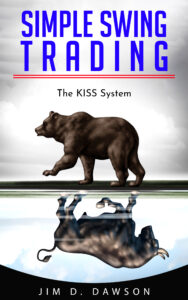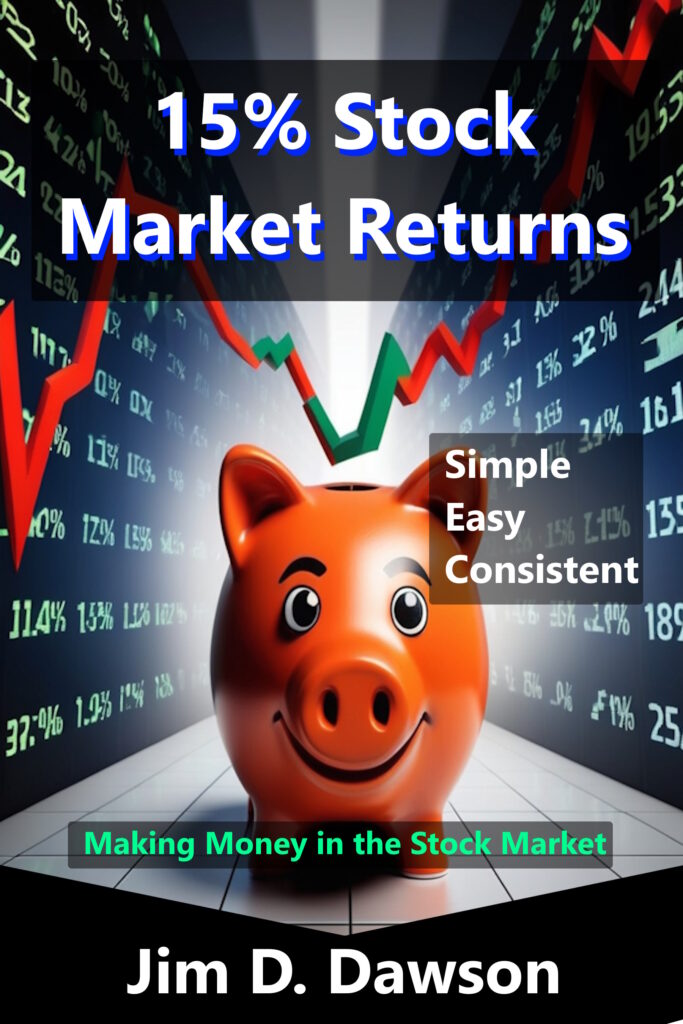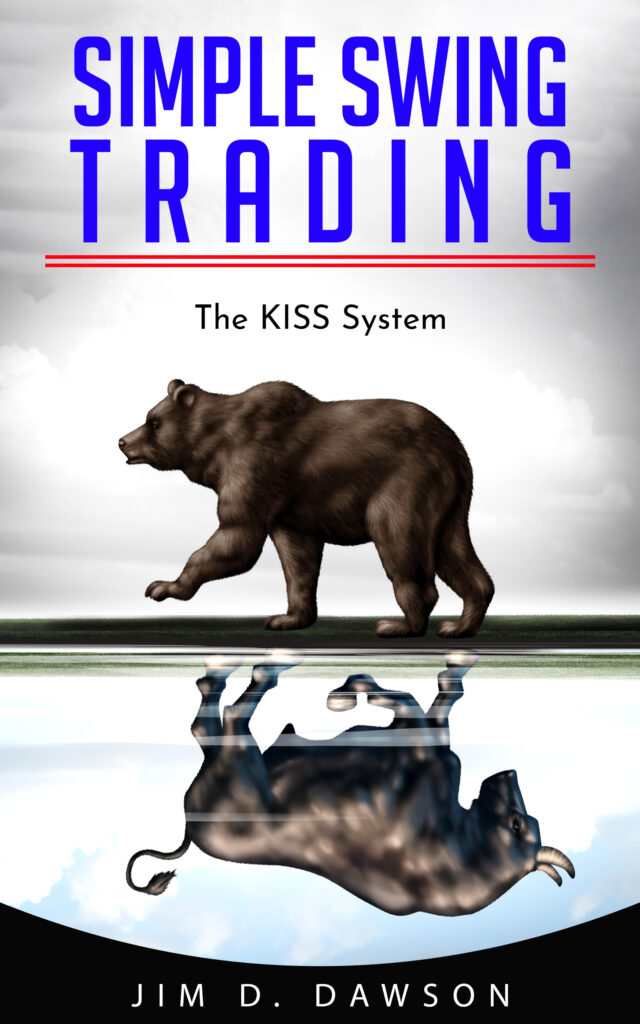Analyzing option chains is a crucial skill for options traders seeking to identify profitable trading opportunities. An option chain, also known as an options matrix, is a listing of all available options for a particular underlying asset, showing different strike prices, expiration dates, and premiums for both call and put options. Understanding how to read and analyze these chains can help traders make informed decisions, optimize their strategies, and manage risks effectively.
This guide will walk you through the key components of an option chain, various analytical techniques, and how to find trading opportunities within these matrices.
SWING Trading – The KISS System
I have developed a three chart system using just three primary indicators. These charts along with some secondary indicators I use for confirmation will give you everything you need to become a successful swing trader with a little bit of practice and a small time commitment either daily or weekly depending on how often you trade.
CLICK HERE to find out more.
Understanding the Components of an Option Chain
Before diving into analysis, it’s essential to understand the basic components of an option chain. Most option chains are displayed in a tabular format and include the following columns:
- Expiration Date: Options have a specific expiration date, after which they become void. The option chain typically lists multiple expiration dates, with options expiring on those dates.
- Strike Price: The strike price is the price at which the holder of the option can buy (call option) or sell (put option) the underlying asset. Option chains list various strike prices, allowing traders to select the level they believe the asset will reach or avoid.
- Bid and Ask Prices: The bid price is the highest price a buyer is willing to pay for an option, while the ask price is the lowest price a seller is willing to accept. The difference between these two prices is called the spread.
- Last Price: This is the most recent trading price of the option.
- Volume: This indicates the number of contracts traded on a particular day. High volume suggests a high level of interest and liquidity in that option.
- Open Interest: Open interest reflects the total number of outstanding option contracts that have not been settled. High open interest can indicate strong interest in the option and potential price stability.
- Implied Volatility (IV): Implied volatility is the market’s expectation of future volatility in the underlying asset’s price. High IV typically means higher option premiums and suggests that the market expects significant price movement.
- Delta: Delta measures the sensitivity of an option’s price to changes in the price of the underlying asset. For example, a delta of 0.5 means the option price is expected to change by $0.50 for every $1 change in the asset’s price.
- Gamma: Gamma represents the rate of change of delta as the underlying asset’s price changes. It helps traders understand how the delta will evolve as the price of the asset moves.
- Theta: Theta measures the rate of time decay in the value of the option. As expiration approaches, options lose value due to the decreasing time to realize a profit.
- Vega: Vega measures the sensitivity of an option’s price to changes in implied volatility. Higher vega indicates greater sensitivity to changes in market expectations of future volatility.
- Rho: Rho measures the sensitivity of an option’s price to changes in interest rates. It’s more relevant for longer-dated options.
Analyzing Option Chains
Once you are familiar with the components of an option chain, the next step is to analyze the data to find potential trading opportunities. Here are some strategies and techniques for analyzing option chains:
1. Identify Market Sentiment
One of the first things traders should assess when analyzing an option chain is the market sentiment surrounding the underlying asset. Market sentiment can be inferred from several key indicators within the option chain:
- Open Interest and Volume: High open interest and volume at specific strike prices can indicate strong market sentiment. For instance, if you see high open interest in call options at a particular strike price, it may suggest that traders expect the asset to rise above that level.
- Implied Volatility: Implied volatility can provide insights into the market’s expectations of future price movements. If IV is high, the market anticipates significant volatility. Conversely, low IV may suggest that the market expects relatively stable prices.
- Put/Call Ratio: The put/call ratio is a widely used indicator to gauge market sentiment. It is calculated by dividing the total number of traded put options by the total number of traded call options. A high put/call ratio suggests bearish sentiment, while a low ratio indicates bullish sentiment.
2. Analyze Delta and Delta Neutral Strategies
Delta is a critical factor in options trading, as it helps traders understand the likelihood of an option expiring in the money (ITM) and the option’s sensitivity to the underlying asset’s price movements.
- Delta Values: Delta values range from 0 to 1 for call options and 0 to -1 for put options. A higher delta value indicates a greater chance of the option expiring ITM. For example, a delta of 0.8 for a call option suggests an 80% chance of the option expiring ITM.
- Delta Neutral Strategy: A delta neutral strategy involves constructing a portfolio of options and/or underlying assets to offset changes in the price of the underlying asset, resulting in a net delta of zero. This strategy is often used by traders seeking to hedge their positions and minimize risk.
3. Exploit Implied Volatility Skew
Implied volatility skew refers to the phenomenon where implied volatility differs across strike prices and expiration dates. By analyzing the volatility skew, traders can identify potential opportunities to exploit market inefficiencies.
- Volatility Skew: A typical volatility skew pattern is where out-of-the-money (OTM) put options have higher implied volatility than OTM call options. This occurs because investors often buy put options for protection against a market downturn, driving up their demand and, consequently, their implied volatility.
- Trading Opportunities: Traders can take advantage of volatility skew by selling options with higher implied volatility (and thus higher premiums) and buying options with lower implied volatility. For example, if the skew is steep, a trader might sell OTM puts and buy OTM calls, expecting the skew to flatten over time.
4. Time Decay and Theta Decay Strategies
Time decay, represented by theta, is the rate at which an option loses value as it approaches expiration. Understanding how time decay impacts option prices is essential for both buying and selling options.
- Theta Decay: Theta decay is not linear; it accelerates as the option approaches its expiration date. Options that are close to expiration lose value more quickly than those with more time remaining.
- Selling Strategies: Traders can capitalize on theta decay by selling options, particularly when they expect the underlying asset’s price to remain relatively stable. Selling options with short expiration dates can generate income from the rapid time decay, as long as the options remain out of the money.
- Buying Strategies: When buying options, it’s important to account for theta decay. Traders should consider purchasing options with longer expiration dates if they anticipate needing more time for their trade to play out. Alternatively, traders might use options spreads to offset theta decay.
5. Use Option Spreads for Risk Management
Option spreads involve combining multiple options positions to create a strategy that limits risk while providing potential for profit. Spreads are a key tool for managing risk and enhancing the probability of success.
- Vertical Spreads: A vertical spread involves buying and selling two options of the same type (calls or puts) with the same expiration date but different strike prices. For example, a bull call spread involves buying a lower strike call option and selling a higher strike call option. This strategy limits the potential loss to the net premium paid while capping the potential gain.
- Iron Condor: An iron condor is a strategy that combines two vertical spreads: a bull put spread and a bear call spread. This strategy profits when the underlying asset’s price remains within a specific range. The maximum gain is limited to the net premium received, while the maximum loss is the difference between the strike prices of the spreads minus the premium received.
- Calendar Spreads: A calendar spread involves buying and selling options with the same strike price but different expiration dates. This strategy can be used to profit from differences in time decay between the options.
6. Monitor Changes in Open Interest
Open interest is a crucial indicator that can provide insights into market sentiment and potential price movements. By monitoring changes in open interest, traders can gauge the strength of a particular trend or the potential for a reversal.
- Increasing Open Interest: If open interest increases along with rising prices, it suggests that new money is entering the market, which can strengthen the current trend. Conversely, if open interest increases with falling prices, it may indicate a bearish trend.
- Decreasing Open Interest: A decrease in open interest can signal that traders are closing their positions, which might indicate the end of a trend or a potential reversal.
- Trading Opportunities: Traders can use open interest data to confirm their market outlook or to identify potential entry and exit points. For example, if a trader sees increasing open interest in a specific strike price and direction (calls or puts), they might consider entering a position in line with that trend.
7. Examine Historical Volatility
Historical volatility (HV) measures the actual past volatility of an asset’s price. Comparing historical volatility with implied volatility can provide insights into whether options are relatively cheap or expensive.
- HV vs. IV: If implied volatility is significantly higher than historical volatility, options may be overpriced, suggesting a potential selling opportunity. Conversely, if implied volatility is lower than historical volatility, options may be underpriced, presenting a buying opportunity.
- Mean Reversion: Volatility tends to revert to its mean over time. Traders can use this tendency to predict future volatility levels and adjust their strategies accordingly.
8. Analyze the Greeks
The Greeks (delta, gamma, theta, vega, and rho) provide a quantitative measure of an option’s risk and potential reward. Analyzing the Greeks helps traders understand how different factors affect the price of an option.
- Delta: Use delta to gauge the directional risk of an option. A higher delta indicates greater sensitivity to price movements in the underlying asset. Traders looking for directional plays may seek options with high delta.
- Gamma: Gamma provides insight into how the delta will change as the underlying asset’s price moves. High gamma indicates that delta will change rapidly, which can be useful in fast-moving markets.
- Theta: Theta is crucial for understanding time decay. Traders selling options should monitor theta to ensure they are profiting from time decay, while buyers should be aware of the negative impact of theta on their positions.
- Vega: Vega is important for understanding the impact of volatility on option prices. Traders expecting an increase in volatility might seek options with high vega, while those expecting stable conditions might prefer lower vega options.
- Rho: Although less commonly used, rho can be important for longer-term options, as it measures the sensitivity of an option’s price to interest rate changes.
Finding Trading Opportunities in Option Chains
Having a solid grasp of how to analyze option chains is only part of the equation. The next step is to apply this knowledge to find actionable trading opportunities. Here are some strategies for identifying profitable trades:
1. Identify Overpriced or Underpriced Options
By comparing implied volatility with historical volatility, you can identify options that may be mispriced by the market. Overpriced options, where implied volatility is significantly higher than historical volatility, can be good candidates for selling strategies. Underpriced options, where implied volatility is lower than historical volatility, might be better suited for buying strategies.
2. Use Option Spreads to Reduce Risk
Option spreads, such as vertical spreads, iron condors, and calendar spreads, can help reduce risk while providing the potential for profit. These strategies are particularly useful when the market outlook is uncertain or when you want to limit potential losses.
3. Exploit Earnings Announcements
Earnings announcements are often accompanied by significant price volatility. By analyzing option chains ahead of earnings releases, you can identify opportunities to profit from expected volatility increases. Strategies like straddles or strangles, which involve buying both call and put options, can be effective in capturing large price swings.
4. Capitalize on Dividends
Stocks that pay dividends can present unique opportunities for options traders. For example, if you expect a stock’s price to drop after the ex-dividend date, you might consider selling call options. Alternatively, you could buy put options if you expect the drop to be more significant than the dividend payout.
5. Look for Implied Volatility Crushes
Implied volatility often spikes before major events, such as earnings announcements, and then drops sharply after the event (a phenomenon known as a volatility crush). Traders can profit from this by selling options before the event, capturing the inflated premiums, and then buying them back after the volatility crush at a lower price.
6. Monitor Changes in Market Conditions
Market conditions can change rapidly, and staying informed is key to finding new opportunities. For example, shifts in interest rates, changes in economic indicators, or geopolitical events can all impact options prices. By staying informed and adapting your strategy accordingly, you can take advantage of these changes.
Conclusion
Analyzing option chains is a critical skill for any options trader. By understanding the various components of an option chain and employing analytical techniques such as assessing market sentiment, evaluating the Greeks, exploiting volatility skew, and using option spreads, traders can identify profitable trading opportunities and manage their risk effectively. Additionally, staying informed about market conditions and events can help traders adapt their strategies and capitalize on new opportunities as they arise.
Whether you’re a novice or an experienced trader, mastering option chain analysis can enhance your ability to make informed decisions, optimize your trading strategies, and ultimately achieve better trading outcomes.


